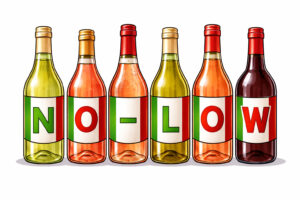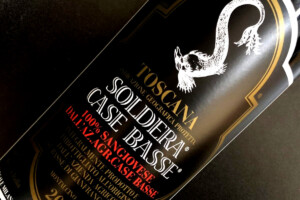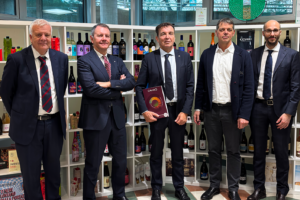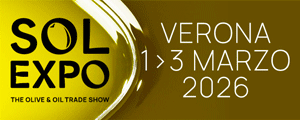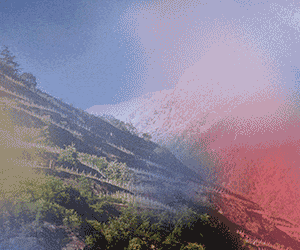At the end of 2010, thanks to sales abroad, Italian wine is emerging from the crisis. There are fewer vineyards. There is an increase in the hectare/farm ratio, which has tripled from the 1990’s to today. Domestic sales continue to fall. These are the findings for 2010 from Assoenologi, Italian Winemakers Association - the trade organization that represents Italian wine technicians.
“The 2010 figures,” says the general manager of Assoenologi, Giuseppe Martelli, “show a sales increase abroad in quantity and revenue that, if confirmed in 2011, could mean a change in direction. The situation at the international level is difficult but Italian wine is doing somewhat better than other food products, and is no longer at the mercy of the schizophrenic markets”.
In 2010, Italy produced 45.5 million hectoliters of wine, or 3.3% less than the five-year average and is stable at 47 million hectoliters. This means that at a structural level the sector is decreasing significantly (in 2000, it produced 54.1 million hectoliters). Growth prospects, however, were very interesting for companies that were able to interpret and manage the crisis. The business sector in general stayed the same as 2009, at 13.5 billion euros, with a net decrease of revenue in the first months of the year on international markets, which was recovered later in the year.
The areas planted for the production of wine continue to decline. In Italy in 1990 there were 970,000 hectares and now there are 702,000 (27.6% less), but there is a higher specification and a marked increase in the ratio holding area per hectare, which has almost tripled, from an average of 1 hectare in the 1990s to nearly 3 acres today. Over the past twenty years we have lost 268,000 hectares, or more than in Lombardy, Puglia and Sicily put together. However, vineyards have been re-grouped and specialized to contrast the tendency in 2010 to further decreases, because of uprooting (Ocm wine) and low revenues. One fact speaks for the extent of the decrease: in 2000 Sicily produced 7.1 million hectoliters and in 2010, 4.3 million, but they significantly improved production firmly believing that one must “produce to sell and not to destroy” with absurd distillations.
Domestic consumption instead, is less than 43 liters per capita. This figure, according to Assoenologi, will continue to decrease and it is expected to fall below 40 liters by 2015.
There is good news, however, from foreign markets. 2009 was characterized by the instability of international markets: even though sales increased it continued to record decreases in revenue. The situation changed significantly in early 2010. “Since February there has been,” adds Martelli, “a reversal of this trend. The latest available data shows an increase in foreign sales of 8.1% in quantity and 9.8% in value compared to the same period last year. Italian wine in the world continues to delight consumers who expect a better performance than from competitors. This fact underlines several positive points. “Last year was,” said Martelli, “a very important year for Italian wine. The first part of the year focused on the recovery of losses due to the international financial crisis and the second part, especially the last quarter, was driven by growth in volume and value. On the positive side, there has been the growth of non-European markets and the simultaneous growth of the average unit value, which has given businesses a breath of fresh air. The export value is estimated around 3.8 billion euros and a volume of 22 million hectoliters.
The month of November showed an unprecedented peak: for the first time, the value of exports exceeded the 400 million euros barrier: 414 to be exact and the threshold of 2.2 million hectoliters. The current expansion of new markets is very clear: China +145% and Russia +69%. Excellent performance of the Canadian market +67.5%, Denmark +37.1% and the Netherlands + 32.2%. The two major markets, Germany and the United States, show a lively dynamic-effectiveness +14.4% and +16.3% respectively. No less important is Switzerland, +15.5%.
In terms of volume, the UK market has shown stagnancy and from January-November 2010 has accumulated a 4.2% decline, which tends to decrease as shown in November: less 34,0%. Switzerland recorded a slight decrease in November less 1.1% and less 4.2%, due to a lower demand for bulk products. Sweden and Norway, instead, show a rise in values. In November the demand was very strong in China +218%, Russia +123%, Canada +50%, South Korea 34%, Denmark +30%, and Netherlands +24%.
According to Assoenologi, tastes are changing and white wines are beating reds. In 2010, there was a further decrease in demand for red wines, except on certain markets, compared to the alternative white wines. This figure is confirmed also by production results: white wines have reached almost 60% of total sales while the red and rosé have fallen to 40%, reversing the situation compared to ten years ago.
In 2010, wine production facilities have further decreased (less 2%) from 700,000 in 2000 to 450,000 (less 36%). Bottlers, as well, have continued to decrease, dropping from 30,000 in 2005 to less than 25,000 (less 16.8%).
In 2009 there were 363 designation of origin wines and by the end of 2010, there were 386, an increase of 6.3%. There were 118 wines with typical geographical indication at the end of 2009 and this number has remained unchanged in 2010. “We often tend to compare the number of Italian designation wines with the French,” says the General Manager of Assoenologi, “that have about 500. According to these data, though, it is not true that Italy has more PDO wines than the French, quite the contrary”.
Focus - The numbers in 2010 (source: Assoenologi)
Wine Production: 45.5 million hectoliters
Land used for wine production: 702.000 acres
Wine producing facilities: 450.000
Bottlers: 25.000
DOC / DOCG (DOP): 386
IGT (IGP): 118
Annual per capita consumption: 43 liters
Export growth rate value: 8.1%
Export growth rate volume: 9.8%
Total value exports: 3.8 billion euros
Total volume exports: 22 million hectoliters
Copyright © 2000/2026
Contatti: info@winenews.it
Seguici anche su Twitter: @WineNewsIt
Seguici anche su Facebook: @winenewsit
Questo articolo è tratto dall'archivio di WineNews - Tutti i diritti riservati - Copyright © 2000/2026










